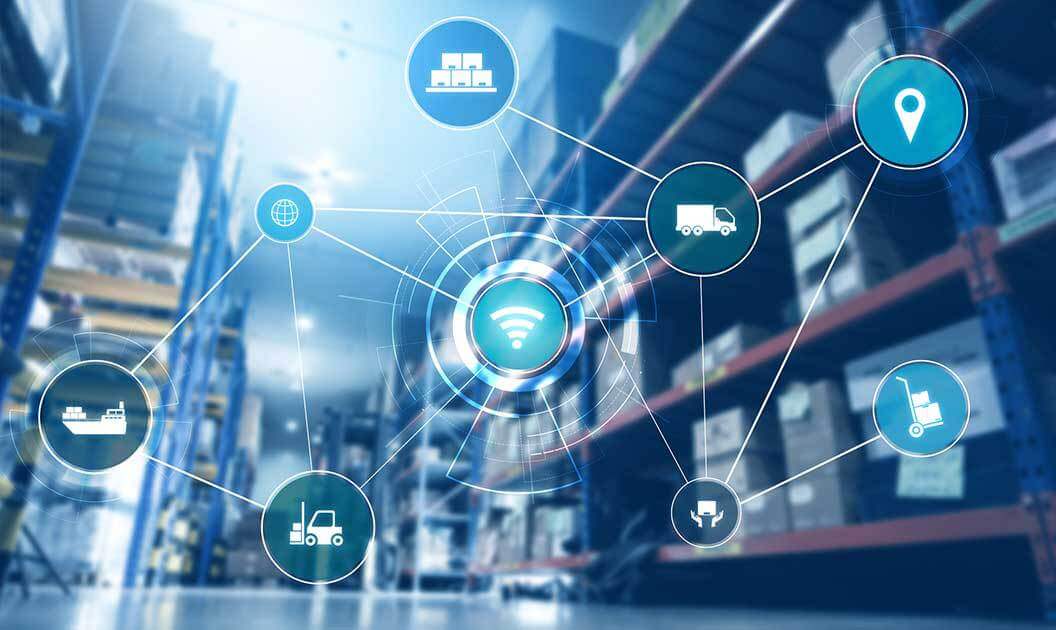
The freight forwarding arm of the logistics industry has a tried and true methodology when it comes to freight forwarding. However, the global market’s growth and logistical and technological advancements have created a demand and change known as digital freight forwarding.
Digital freight forwarding is the evolution of traditional freight forwarding. Through software applications and automation, freight forwarding has improved in its proficiency. Reductions in cost, improved speed and efficiency, secure documentation, and total visibility benefit freight forwarding as it grows.
With the clear advantages of digital freight forwarding, read on to discover exactly how these technological advancements can affect your imports.

Digital freight forwarding has profoundly impacted the shipping industry in recent years. Through the constant evolution of emerging technologies, former logistical hurdles are proving to be of less consequence.
So what exactly is digital freight forwarding, you may ask? This form of freight forwarding specifically utilizes advanced digital platforms such as software applications and automation to create a more accurate and efficient freight shipping method.
Because of the digital transformation of freight forwarding, there are now numerous differences between digital and traditional freight forwarding. The demand for faster, more efficient, and cost-effective means for freight forwarding is always a concern.
The process has seen dramatic upturns in freight management and supply chain functions through digital advancements while also increasing service levels in the logistics industry as a whole.
We live in an age where smartphones and tablets are an extension of ourselves personally and in business. Everything is driven by one form of software or another while incorporating automated feature sets to improve our quality of life and trade.

There are distinct differences between these two forms of freight forwarding, even if the process remains essentially the same. The critical difference revolves around the latest software-driven technologies to drive efficiency.
The focus of any freight forwarding company stays on five major areas:
However, the differentiating factor lies in the methods used to address these focal points.
The following illustrates the differences between the two practices in freight forwarding and how one is more evolved and efficient than the other. Keeping up with the ever-changing and expanding global marketplaces demands certain flexibility and evolution.
Digital Freight Forwarding
Traditional Freight Forwarding
Digital freight forwarding relies heavily on the deployment and execution of technology in a constantly evolving effort for efficiency and customer experience. A traditional freight forwarding service forgoes the use of advanced technologies, instead favoring traditional methods.
These differences are what separate digital from traditional freight forwarding. Clearly, anyone can see why the evolution of this aspect in shipping is both needed and essential to any shipper looking to import goods.

Through the digital transformation of the logistics industry, certain features have created shifts in speed and efficiency and the level of quality found within freight management as a whole. The use of software and automation has changed everything from now on.
The level of customer service and user experience is unparalleled for importers using digital freight forwarding services. Software applications offer real-time assistance to customers, bringing forth better relationships between the business and its clients.
Essential features that are critical to the digital effect on freight forwarding are as follows:
While not a feature, the feeling of avoiding being lost in the mix of things is relevant to software and automation integration. The essential elements of going digital all involve taking freight management service to the next level.
This evolution in shipping is on center stage and is the main reason why you should utilize digital freight forwarding. Simply put, the service is better in all respects. In business, leveraging new features that simplify and create opportunities is critical to flourish.
Numerous advantages come with the advancements of an all-digital future in freight management, specifically freight forwarding.
The following key points are essential in digital freight forwarding.
The transition to digital freight forwarding leverages the advancements in the service in so many ways as you can see illustrated above. All these advancements are vital to the success of any freight shipment.
With the ever-changing landscape of business and technology, embracing change and anything that can give your business an edge over the competition is critical. The advantages of digital freight forwarding are self-evident.
Regardless of the blatant advantages, some disadvantages are associated with transitioning to a digital freight forwarding structure. When considering the potential of digital freight forwarding, it is essential to bear in mind the following.

Since the turn of the 21st century, eCommerce has been in a state of constant growth. The eCommerce business platform has grown to a point in the global market where it has exceeded that of traditional brick-and-mortar businesses.
In this type of industry, much of the business revolves around high turnaround times, quick use of assets, and a steady flow of imported goods from overseas. The market growth of digital freight forwarding is forecasted to reach unprecedented heights through 2030.
| Country | United States | Japan | China | Korea |
| Total Sales | 8.6 Billion | 3.3 Billion | 2.3 Billion | 1.4 Billion |
| GDP Share | 42% | 66% | 17% | 84% |
Through the growth of the eCommerce industry, the demand for products is growing annually. Traditional freight forwarding simply cannot keep up with the growing demand of eCommerce. The use of digital freight forwarding is a straightforward solution and a perfect fit for this industry.
The process of obtaining international shipments, prepping them for shipping, arranging various means of transport, and managing documents is a complex task. Digital freight forwarding’s ability to automate tasks and centralize information all in real time is genuinely astounding.
Importing worldwide goods takes experience, skill, and the latest technology and equipment. That is where USA Freight Forwarding Services comes into play. There is zero time for excuses or failures in the global market. Let us be your trusted digital freight forwarding partner.
Our team is experienced, knowledgeable, friendly, and incredibly dedicated to facilitating your needs around the clock. Our services are unmatched in the industry as we strive to treat our customers like family and their needs as if they were our own.
We offer a variety of freight forwarding services aimed at helping you ship your goods with ease. No matter what type of freight you’re shipping, we can offer the following services:
Our primary concern revolves around your freight forwarding needs, and we never fail to deliver a service that always keeps your priorities in mind. Call us at (866) 941-8081 or click today to start freight forwarding with the latest in technologies while not skipping a beat.